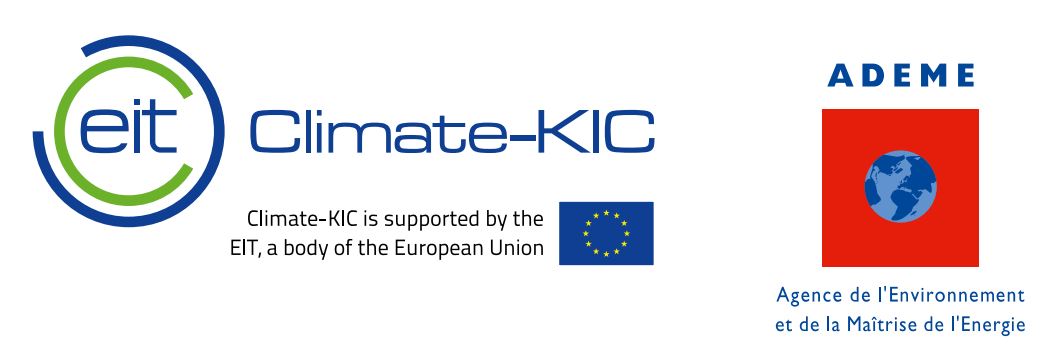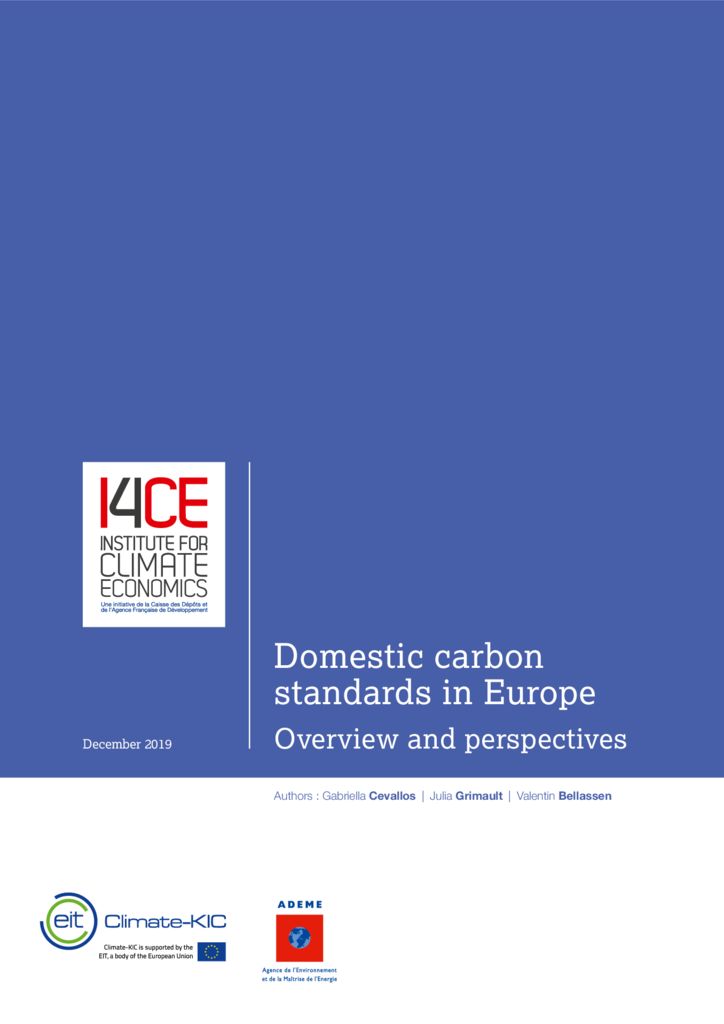Domestic carbon standards in Europe
In a general context of higher carbon prices and with a growing interest from companies to finance local emissions reductions projects, several European countries have started developing their own domestic carbon certification standards since the early 2010s. This study provides an overview of existing standards and of the obstacles they must overcome, as well as ideas for their future development. It notably highlights several topics on which the various European standards could collaborate.
What is the current situation?
The benchmark conducted on nine domestic schemes identifies five key features:
- Business – the market is consolidating: At least 3 MtCO2e are available to be purchased of which 66% are ex-ante. At least 2.5 MtCO2e are waiting to be validated or verified. Furthermore, five new domestic schemes have been launched since 2015, which points to an upcoming diversification and consolidation of the current supply of domestic projects in Europe.
- Methodologies & activities – a launching pad for agriculture and land-use projects: 98% of domestic carbon units tracked are from the land-use sector. We identified four categories of methodologies: (1) forestry; (2) peatlands; (3) other innovative carbon removals (wood products, biochar, soil carbon); and (4) agriculture where methodologies are recent and the first projects have yet to be validated.
- Price and project size -Higher prices per tons CO2. European carbon projects are in average smaller than international carbon projects. They present higher prices with an average of 13€/tCO2e within a range from 6 €/tCO2e to 110€/tCO2e in Europe vs 6€/tCO2e on international markets with a price range from 0.4 €/tCO2e to 72€/tCO2e.
- Governance – European standards are a public affair. Five standards are directly managed by public entities and four are semi-public, with strong partnership with public actors. This is a European specificity when most of international carbon standards are managed by private actors.
- MRV- Common guidelines with specific features adapted to national contexts. The “additionality” concept is used by all standards. Nonetheless, the criteria retained for its demonstration are heterogenous. Validation is mostly documentary, and verification is realized mostly five years after the start of project, with field visits. Project duration varies between 2 to 100 years, depending of the methodology used, and determines the need of ex-ante or ex-post crediting.
What are the challenges faced by carbon domestic standards and the solutions implemented?
- Reduce MRV costs and simplify processes. To allow the development of local carbon projects, MRV frameworks have been adapted to fit to small-scale projects and lower costs: discount rates to manage uncertainty, development of group certification scheme, diversification of auditors to carry out verification. Domestic standards (as well as most other MRV frameworks) are exploring the possibility of using remote sensing data and general information collection systems. Nevertheless, MRV costs are still identified as a challenge across Europe.
- Deal with land-use specificities. The land-use and agriculture sectors are subject to specific time dynamics and risks. To deal with these, ex-ante credits are used by most standards for land-use methodologies, and discount rates and buffer pools are implemented as collegial insurance systems to deal with non-permanence risk.
- Value beyond carbon benefits to allow for higher carbon prices. Standards need to value environmental, social and economic co-benefits of projects, as well as the contribution to local development, especially to allow for higher carbon prices.
Dedicated resources to the standard promotion and dissemination: If the standards’ management by public actors can increase buyer’s trust, public institutions might have less resources to dedicate to the promotion of the standard and its dissemination throughout the territory. - Bring clear and coherent communication guidelines to support the contribution to national climate targets: some domestic standards knowingly disregard the “double claiming issue” and are increasingly viewed as a mean to achieve national climate targets and environmental goals. In addition, communication frameworks are slowly being built to differentiate the environmental integrity of projects from the voluntary climate strategy of companies.
What are the perspectives?
- Abroad, carbon projects are increasingly being linked to compliance tools (emission trading scheme, carbon tax or sectorial compliance offsetting) as a way to channel private investments towards concrete climate projects. Using carbon projects for a compliance demand could be a viable option to trigger climate actions within the so-called ‘diffuse sector’, but should be explore carefully in order to not induce unintended “rebound effect” elsewhere in national economies.
- These carbon frameworks developed at domestic level could also be used to steer subsidies towards result-based actions. The reform of the Common Agriculture Policy (CAP) could partly (e.g eco-shemes) rely on these standards to attribute subsidies and incentivize transition to low carbon practices in agriculture.
- Synergies between domestic standards on the European level could be developed on several topics:
- Development of methodologies is one of the costliest activities. Sharing and disseminating already developed tools and methodologies would support a wider coverage of practices in Europe.
- Technical collaboration around remoted sensed solutions is seen as one of the biggest steps in making monitoring or verification most cost-efficient.
- Common communication guidelines at the European level on different issues raised by emission reductions projects (double-claiming, context of use of local carbon projects) could be a way to boost buyers’ confidence in domestic standards and ensure long-term demand.
This study is part of a project led by I4CE with the EIT Climate KIC, which aimed at enhancing result-based payments for agriculture and forestry projects in Europe, especially by facilitating the emergence of a European movement on voluntary carbon markets. A part of this project especially focuses on developing cooperation between the existing carbon certification schemes in Europe. This study was also co-funded by the French Environment and Energy Management Agency.


